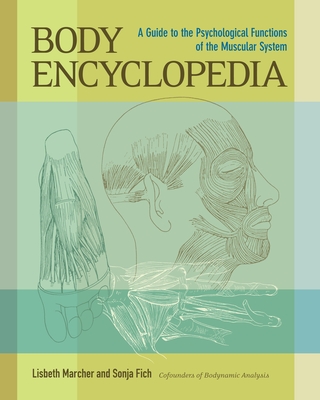
Marcher, Lisbeth
product information
description
oriented psychology developed in Denmark by the authors and their colleagues, Body Encyclopedia describes the developmental sequence in which psychological and emotional elements are linked to specific muscles. The book shows how certain responses to events in our lives end up bound and connected with our movement patterns. Through extensive research, Marcher, Fich, and several others have mapped out the psychological functions of 154 muscles and related tissues. Featuring more than 200 detailed illustrations, Body Encyclopedia opens with an introduction to the history and development of Bodynamic Analysis. The core of the book presents a description of each muscle, including movement positions, age level when the muscle is activated, and a summary of the psychological themes associated with each muscle. Basic instructions are provided for bodymapping, a hands-on procedure that involves palpating and registering muscle response. Vivid case studies demonstrate how to apply the information in real-life situations. Using the book as a guide, readers can accurately identify and investigate the underlying psychological issues associated with muscle pain, discomfort, or weakness in specific areas of the body.
member goods
No member items were found under this heading.
Return Policy
All sales are final
Shipping
No special shipping considerations available.
Shipping fees determined at checkout.







